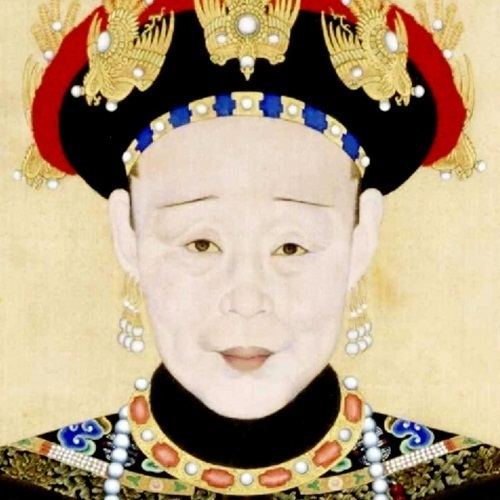Reign 1802–1820 Spouse Jiaqing Emperor Reign 1820–1850 Successor Empress Xiaoshencheng | Name Empress Xiaoherui Predecessor Empress Xiaoshurui Died December 1850 Children Mianxin, Miankai | |
 | ||
Issue Miankai, Prince Chunke (惇恪親王綿愷)
Mianxin, Prince Duanhuai (瑞懷親王綿忻)
Unnamed princess (died in childhood) House Niuhuru (by birth)
Aisin Gioro (by marriage) Father Niuhuru Gong'ala (鈕祜祿恭阿拉) Similar People Jiaqing Emperor, Daoguang Emperor, Empress Xiaoyichun, Qianlong Emperor, Nurhaci | ||
Empress Xiaoherui (1776–1850) was the second Empress Consort of the Jiaqing Emperor of the Qing dynasty.
Life
Empress Xiaoherui was born in the Manchu Niohuru clan. She was the daughter of Gong'ala (恭阿拉), who served as Secretary of the Ministry of Rites during the reign of the Qianlong Emperor.
Lady Niohuru entered the Forbidden City in an unknown year, and was married as a secondary consort to Yongyan (Prince Jia), the 15th son of the Qianlong Emperor. In 1793, she gave birth to Prince Jia's seventh daughter, but her daughter died in 1795 before reaching adulthood. She also bore Prince Jia two sons, Miankai and Mianxin, in 1795 and 1805 respectively. In 1796, the Qianlong Emperor abdicated and became Retired Emperor, while Prince Jia succeeded him and was enthroned as the Jiaqing Emperor. Lady Niohuru, as a former secondary consort of the emperor, was granted the rank of Noble Consort. When the Jiaqing Emperor's primary consort, Lady Hitara (Empress Xiaoshurui), died of illness after being Empress for only a year, Lady Niohuru was placed in charge of the emperor's harem and promoted to the rank of Imperial Noble Consort. The Jiaqing Emperor wanted to make Lady Niohuru his new Empress but had to wait until the mourning period for Empress Xiaoshurui was over. In 1799, the Retired Emperor (Qianlong Emperor) died so Lady Niohuru's promotion to Empress was delayed until 1801.
Lady Niohuru was in charge of the upbringing of Mianning, the Jiaqing Emperor's second son who was born to Empress Xiaoshurui. She took care of Mianning and treated him well, and they shared a close and harmonious relationship. When the Jiaqing Emperor died in 1820 before designating one of his sons as Crown Prince, the decision on the succession was left to Lady Niohuru, who became Empress Dowager. Lady Niohuru proclaimed Mianning the new emperor before an imperial edict was officially issued. She ordered her servants to deliver the message to Mianning, who was away in Chengde at the time. Mianning rushed back to the Forbidden City in Beijing and was enthroned as the Daoguang Emperor. The Daoguang Emperor was extremely pleased with Lady Niohuru's decision to make him emperor, claiming that she was broad-minded because she did not misuse her power to name any of her two sons (Miankai and Mianxin) as the new emperor. The Daoguang Emperor also granted Lady Niohuru the title "Empress Dowager Gongci" (恭慈皇太后). Empress Dowager Gongci moved to the Forbidden City's Palace of Longevity and Health, which was traditionally a residence of the emperor's mother.
In 1836, Empress Dowager Gongci celebrated her 60th birthday. The Daoguang Emperor donned his formal court regalia for the occasion. He first went to the Hall of Central Harmony, where he read a memorial for the Empress Dowager to wish her well. He then mounted a cart and rode through the right Wing Gate to the left Gate of Eternal Health, where he disembarked. Carrying the memorial in his hands, the emperor was accompanied by an entourage of nobles and high-ranking officials. After the emperor delivered his message and birthday gifts, the retinue jointly presented Empress Dowager Gongci with a court scepter.
On 10 April 1838, Empress Dowager Gongci and the Daoguang Emperor visited the Western Qing tombs for 13 days.
Empress Dowager Gongci died in the 12th lunar month of the 29th year of the Daoguang Emperor's reign, which roughly translates to January 1850 in the Gregorian calendar. She was posthumously granted the title "Empress Xiaoherui", and was interred in a separate tomb near the Changling Mausoleum in the Western Qing tombs.
